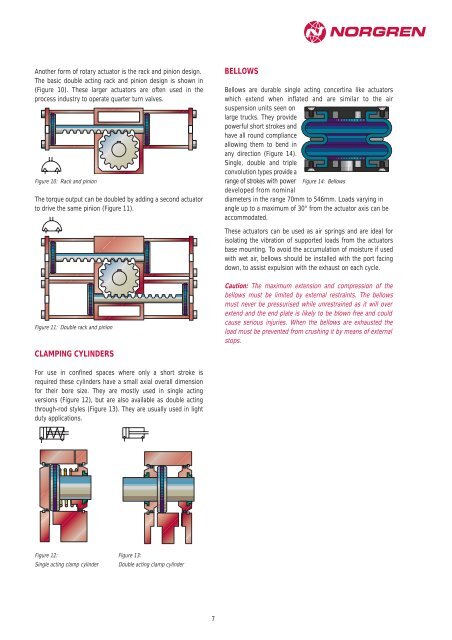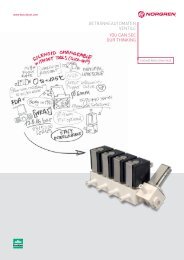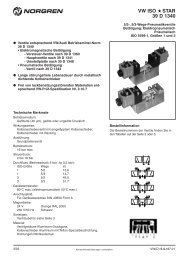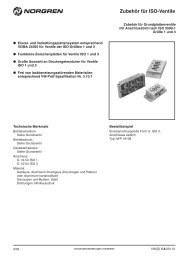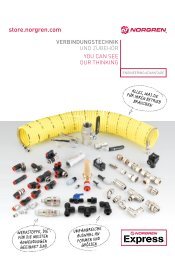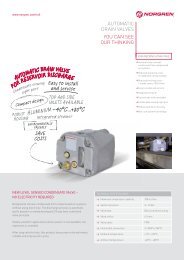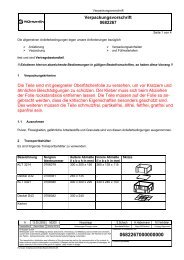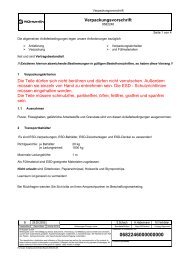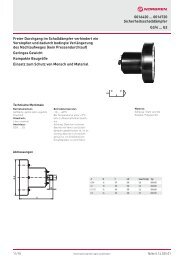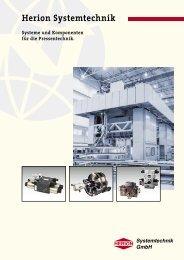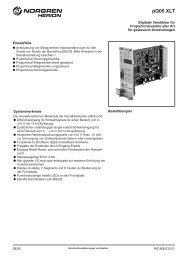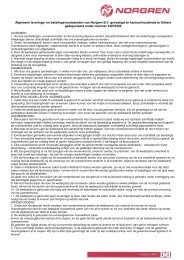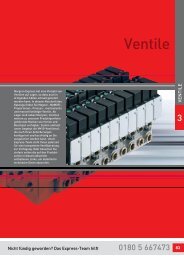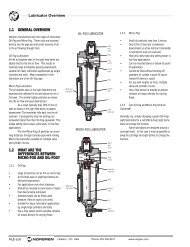Actuator Guide - Norgren Pneumatics. Motion Control Equipment ...
Actuator Guide - Norgren Pneumatics. Motion Control Equipment ...
Actuator Guide - Norgren Pneumatics. Motion Control Equipment ...
Create successful ePaper yourself
Turn your PDF publications into a flip-book with our unique Google optimized e-Paper software.
Another form of rotary actuator is the rack and pinion design.<br />
The basic double acting rack and pinion design is shown in<br />
(Figure 10). These larger actuators are often used in the<br />
process industry to operate quarter turn valves.<br />
Figure 10: Rack and pinion<br />
The torque output can be doubled by adding a second actuator<br />
to drive the same pinion (Figure 11).<br />
Figure 11: Double rack and pinion<br />
CLAMPING CYLINDERS<br />
For use in confined spaces where only a short stroke is<br />
required these cylinders have a small axial overall dimension<br />
for their bore size. They are mostly used in single acting<br />
versions (Figure 12), but are also available as double acting<br />
through-rod styles (Figure 13). They are usually used in light<br />
duty applications.<br />
Figure 12: Figure 13:<br />
Single acting clamp cylinder Double acting clamp cylinder<br />
7<br />
BELLOWS<br />
Bellows are durable single acting concertina like actuators<br />
which extend when inflated and are similar to the air<br />
suspension units seen on<br />
large trucks. They provide<br />
powerful short strokes and<br />
have all round compliance<br />
allowing them to bend in<br />
any direction (Figure 14).<br />
Single, double and triple<br />
convolution types provide a<br />
range of strokes with power Figure 14: Bellows<br />
developed from nominal<br />
diameters in the range 70mm to 546mm. Loads varying in<br />
angle up to a maximum of 30° from the actuator axis can be<br />
accommodated.<br />
These actuators can be used as air springs and are ideal for<br />
isolating the vibration of supported loads from the actuators<br />
base mounting. To avoid the accumulation of moisture if used<br />
with wet air, bellows should be installed with the port facing<br />
down, to assist expulsion with the exhaust on each cycle.<br />
Caution: The maximum extension and compression of the<br />
bellows must be limited by external restraints. The bellows<br />
must never be pressurised while unrestrained as it will over<br />
extend and the end plate is likely to be blown free and could<br />
cause serious injuries. When the bellows are exhausted the<br />
load must be prevented from crushing it by means of external<br />
stops.


